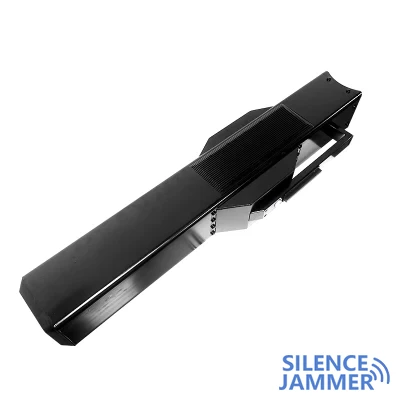An exam signal jammer is a device used in exam venues to prevent candidates from cheating using communication devices during exams. It is designed to block wireless communication signals in specific frequency bands, such as mobile phone signals, WIFI signals, Bluetooth signals, etc. However, the question of whether all communication signals can be blocked requires in-depth analysis and discussion.

How does the exam signal jammer work?
Exam signal jammers usually interfere with surrounding communication equipment by emitting wireless signals at specific frequencies. It can cover an area within a certain range and prevent these devices from establishing connections with external communication networks. This interference can be achieved by modulating parameters such as frequency, power and waveform of wireless signals, thereby effectively preventing candidates from cheating during the exam by using communication devices such as mobile phones, tablets, and Bluetooth headsets.
Possible communication signals are not shielded
Although the exam signal jammer can effectively block most communication signals, in some cases, there may still be unshielded communication signals. This may include:
Wired communication equipment: The test signal jammer is mainly aimed at wireless communication equipment, and has poor shielding effect on wired communication equipment (such as wired networks, wired telephones, etc.).
Low-frequency or non-standard frequency band wireless signals: Exam signal jammers are usually designed to block common wireless communication frequency bands, such as 2.4GHz and 5GHz WIFI signals, as well as mobile phone communication bands. However, it may not be possible to completely shield low-frequency or non-standard frequency band wireless signals.
High-Powered Devices: High-powered communications equipment may challenge the jamming capabilities of the exam signal jammer, especially if the jammer has a large coverage area.
remedial measures taken
In order to deal with possible situations where communication signals are not shielded, the following remedial measures are usually taken during the exam:
Physical Inspection: Conduct a physical inspection of the exam room before the exam begins to ensure there are no hidden communications devices.
Disable external communication devices: Before the exam, candidates are required to hand over all communication devices to the invigilator for safekeeping and are prohibited from bringing them into the examination room.
Security camera monitoring: Set up security camera monitoring equipment in the examination room to monitor the behavior of candidates.
In conclusion
While exam signal jammers can effectively block the use of most communication devices, there may be situations where communication signals are not blocked. In order to ensure the fairness and security of the exam, a variety of measures are usually taken to prevent cheating in the exam, not just relying on signal jammers. Through the comprehensive application of physical inspection, disabling external devices and security monitoring, the order and fairness of the exam can be effectively maintained.


